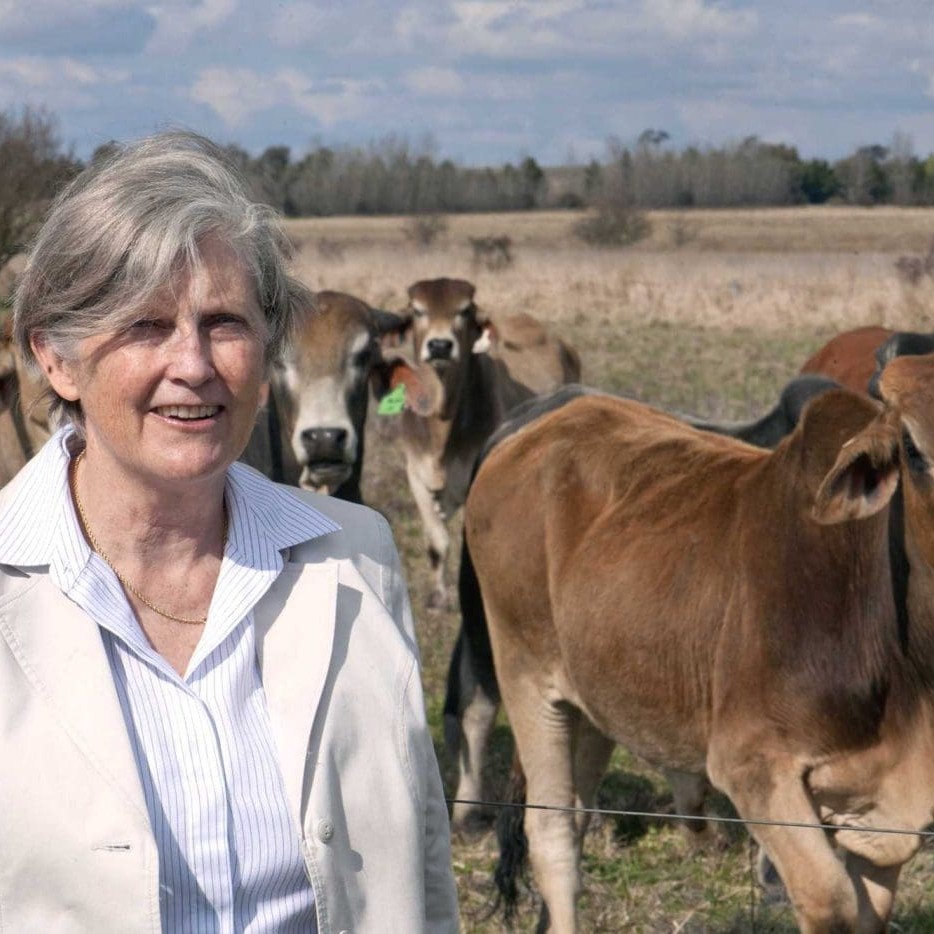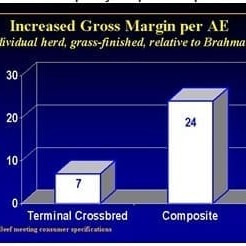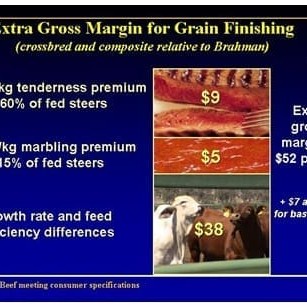 Following the ‘Beef Crash’ of the mid-1970s, the northern Australian beef herd rapidly changed from British breeds such as Shorthorns to being based mostly on a well-adapted high-grade Brahman cow herd.
Following the ‘Beef Crash’ of the mid-1970s, the northern Australian beef herd rapidly changed from British breeds such as Shorthorns to being based mostly on a well-adapted high-grade Brahman cow herd.
However, there are very clear productivity and profitability benefits from using new genetic opportunities to improve the Northern Australian beef herd, research shows.
Producers can seek to genetically improve their herds in two ways.
The first is to genetically improve attributes such as beef tenderness and female reproductive performance in high-grade Brahman herds using the CRC’s new genomic prediction equations, due for released at Beef Australia 2012 industry event in Rockhampton in May.
These DNA-based tests will be integrated with BreedPlan EBVs, and will allow seedstock breeders to identify young bulls that are genetically superior for hard-to-measure traits such as carcase and beef quality, feed efficiency and male and female reproductive performance.
Commercial cattle breeders will access the superior genetics by purchasing bulls or semen with genomically-enhanced EBVs, known by abbreviation as gEBVs.
To continue to improve the Brahman breed using gEBVs, ongoing measurement of the traits in cattle that are typical of northern Australian beef production systems is needed.
The Australian Brahman Breeders Association has already accepted this ongoing need and developed its Brahman Information Nucleus to ensure the breed continues to improve well into the future, thereby opening up new and alternative market opportunities for Brahman beef.
Crossbreeding
The second genetic improvement opportunity for Brahman herds in northern Australia is to capitalise on hybrid vigour, or heterosis, through crossbreeding – to either form tropically-adapted composite herds or undertake systematic crossbreeding programs.
Systematic crossbreeding requires considerable management input and may be difficult to implement for many commercial breeders in extensive pastoral environments. However once formed, development of a tropically-adapted composite herd offers the same ease of management as a high-grade Brahman herd.
The critical factor that producers need to consider if choosing to crossbreed is to ensure the herd remains well-adapted to environmental stressors such as ticks, worms, buffalo fly, high temperatures and humidity, endemic diseases and seasonally poor nutrition.
Maintaining sufficient adaptation in northern herds requires a careful choice of breeds to ensure an appropriate mix of ‘adapted’ and ‘productive’ genes. ‘Adapted’ genes are derived from high grade Brahmans and their crosses as well as the tropically adapted Bos taurus (taurine) breeds and their derivatives such as the Belmont Red, Bonsmara, Senepol and Tuli.
Depending on the severity of the environment, most areas of northern Australia need somewhere between 25pc and 75pc ‘adapted’ genes for optimal production. Only exceptionally stressful environments need 100pc ‘adapted’ genes.
This means that beef producers can take advantage of hybrid vigour from crossbreeding to maximise productive performance (carcase and beef quality and reproductive rates) without reducing adaptation below the levels needed for the particular production environment.
For most northern Australian environments, optimal levels of productivity can be achieved using a combination of Brahman, tropically-adapted taurine and British or European breed types, but the harsher and wetter the environment, the greater the need for higher Brahman content.
Clear economic benefit in crossbreeds and composites
 The Beef CRC’s research with terminal crossbred and tropically-adapted composite cattle since 1993 shows clear economic benefits can be achieved through crossbreeding.
The Beef CRC’s research with terminal crossbred and tropically-adapted composite cattle since 1993 shows clear economic benefits can be achieved through crossbreeding.
In 2003, Dr Garry Griffith and Dr Bill Holmes used early CRC results to show that changing 25pc of the Brahman herd in northern Australia to terminal crossbreeds and tropically-adapted composites increased gross margins by $7 and $24 per adult equivalent (AE) respectively, relative to the Brahman for a northern Australian grass-finishing system.
A $7/AE benefit to the terminal cross and the composite was achieved through increased growth rates, whereas the $17/AE additional benefit to the composite herd was derived from improved reproductive performance of the composite cow herd.
When sale steers were finished in a feedlot, terminal crossbred and composite steers realised an additional $38/AE for improved growth rate and feed efficiency (in addition to the initial $7 and $24/AE gross margin).
Conservative figures also showed an extra gross margin of $5/AE could be achieved from a 10c/kg marbling premium in 15pc of crossbred and composite steers (marble score 2 rather than marble score 0 or 1). Applying a 5c/kg premium for 60pc of feedlot-finished crossbred and composite steers achieving MSA 3-star added an additional gross margin of $9/AE.
 Since those values were estimated, the Beef CRC has been able to confirm their validity through a major breeding program which evaluated Brahman and tropically adapted composite cattle over a 12-year period.
Since those values were estimated, the Beef CRC has been able to confirm their validity through a major breeding program which evaluated Brahman and tropically adapted composite cattle over a 12-year period.
That program recorded full growth, feed efficiency and carcase and beef quality attributes in steer progeny, while the half-sib sisters of those steers entered the breeding herds on five research stations across Queensland and had very detailed adaptive and reproductive measurements recorded until they had had the opportunity to rear six calves to weaning (i.e. until the cows were about ten years of age).
No major trade-offs between female and steer performance
The cows’ bull calves were all retained so complete measures of bull performance could be obtained to identify early-life indicator traits for female reproductive performance.
The aim of this major program was to identify whether genetic trade-offs existed between reproduction and adaptation of the breeding herds in harsh environments and the ability of sale animals grown and finished in more benign environments to meet premium beef market specifications.
Results from that project show there are no major trade-off between female and steer performance.
The research shows beef producers in harsh northern Australian environments can select to improve carcase and beef quality while simultaneously improving female reproductive performance – very good news for northern producers looking for alternative markets to the live export trade.
